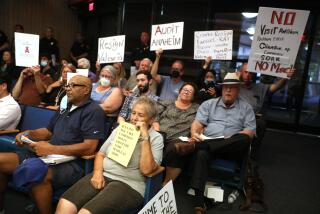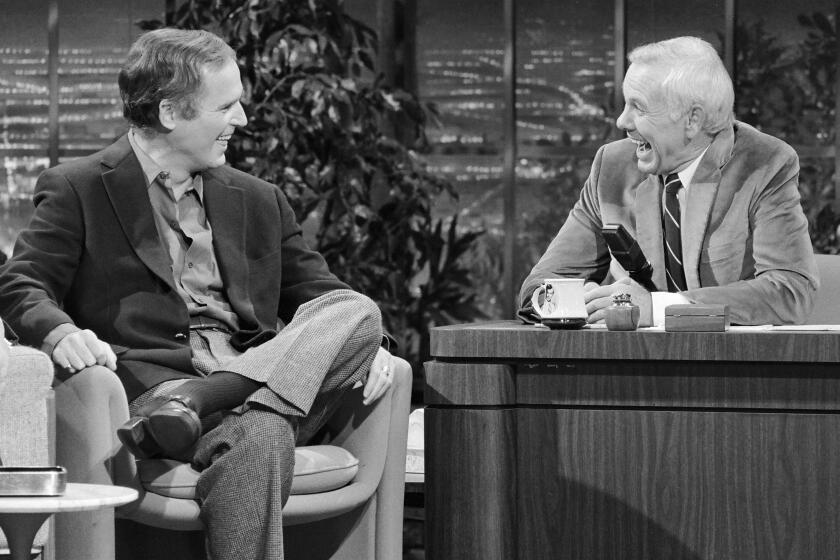The effort to reform Proposition 13 advances, by a very tiny step
It’s not always politics that makes strange bedfellows, but urgency. That’s what’s driving the sudden popularity of an effort to reform Proposition 13 by eliminating what has long been one of its most flagrant loopholes for commercial property owners.
The reform has been endorsed by the California Chamber of Commerce, long our most vociferous opponent of progress. And the Howard Jarvis Taxpayers Assn., the self-appointed guardian of all that is unfair and obsolete about California’s property tax system, has said it won’t oppose the reform.
They appear to be worried about a rising tide of public discontent with business maneuvers to avert reassessments of their property under Proposition 13. But there are signs that the change won’t make much difference in the ability of businesses to take advantage of the rules.
The reform, sponsored by Assembly Democrats Tom Ammiano of San Francisco and Raul Bocanegra of Pacoima, would shut a loophole that allowed commercial property buyers to carve up ownership shares so no individual buyer acquired a stake of more than 50%. Keeping below that threshold averted a reassessment that could lead to a tax increase on the property.
Under the new rule, a commercial property will be reassessed whenever 90% or more of the property is sold or transferred over a three-year period, no matter how many owners are involved.
The reform would avert maneuvers like the one staged by computer tycoon Michael Dell and his partners in 2006, when they carefully structured their $200-million purchase of the Fairmont Miramar Hotel in Santa Monica so each would stay below 50%.
As my colleagues Jack Dolan and Jason Felch reported, a firm owned by Dell acquired 42.5%. The trust of his wife, Susan, acquired 49%. And a company set up by two of Dell’s investment managers acquired the remaining 8.5%. They reported that no ownership change triggering a reassessment had occurred, saving an estimated $1 million a year in property taxes.
The divergence between residential and commercial reassessment rules under Proposition 13 long has been a scandal. It also cheats homeowners; in Los Angeles County, the residential share of total property taxes has gone from 40% before the 1978 passage of the law to 57% today.
The problem, as Lenny Goldberg, executive director of the California Tax Reform Assn., explains, is that change of ownership is a lousy metric to apply to commercial property; there are too many ways for businesses to structure transfers of commercial buildings to avert the ownership rules. It’s not so easy in the residential market, where homes typically are bought and sold by individuals or couples.
This results in ridiculous disparities in assessments of equivalent properties. Goldberg points to two adjoining, nearly identical vacant lots across from Staples Center, used for parking, one assessed at $11.44 per square foot, the other at $214 per square foot.
Goldberg believes that the Chamber and the Jarvis association have fallen in behind the Ammiano/Bocanegro proposal because they see that public unhappiness with the disparity between residential and commercial assessments is rising.
“They’ve come to a point where they know they have to close this blatant loophole,” he says. The danger is that Big Business will claim that this one reform is enough. In truth, it’s just the first step toward a comprehensive change in how commercial property is assessed.
“The big guys who have stonewalled this issue forever have decided to give in on this,” he says. “But in terms of solving a problem, it’s just an attempt by business to paper over the issue.” Little is keeping commercial property buyers from structuring their future transactions so the ownership change reaches, say, 89.9% to keep below the new threshold.
Be forewarned: When the next proposal arrives to really do something about the flaws of Proposition 13, the business community will still be stonewalling.
More to Read
Inside the business of entertainment
The Wide Shot brings you news, analysis and insights on everything from streaming wars to production — and what it all means for the future.
You may occasionally receive promotional content from the Los Angeles Times.











